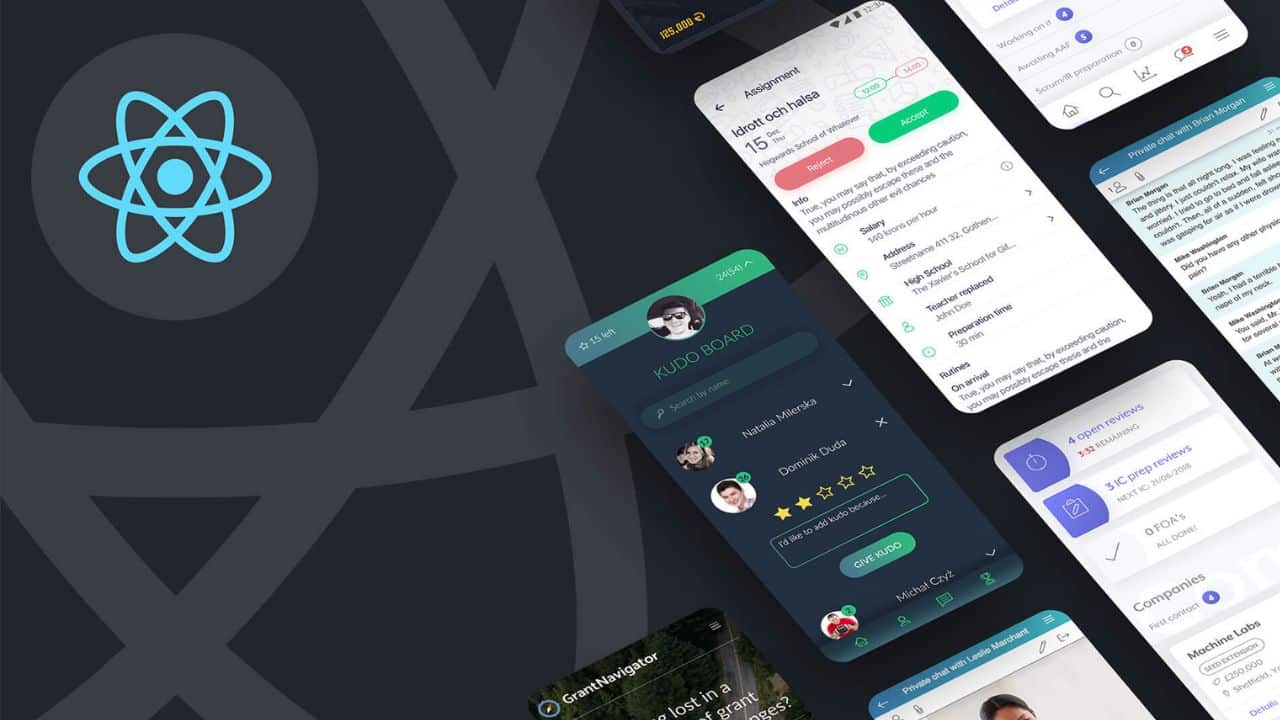Building hybrid mobile applications has become the most valuable asset in any developer’s life. And why not? It removes the burden of creating apps that runs separately on iOS and Android extensively. Therefore, saving time and more chances to learn is possible. With the demand escalating, many frameworks have also emerged in the light of giving extravaganza services to organizations needing app development. And amidst all the frameworks, React Native app development offers developers the best results and is the most trusted cross-platform app development solution.
But is the future shining for React Native? Are developers open to new opportunities in 2023 with the technology? To understand the significance of the framework it is necessary to mark all the aspects of React Native and hence we are here to help you with this guide pivoting on the future of React Native, emphasizing the trends, techniques, and market overview for developers to upgrade their knowledge power and curate better applications in 2023.
What Is React Native And When To Use It For Your App In 2023?
React Native is an open-source framework that allows developers to build mobile applications for both iOS and Android platforms using JavaScript and React, a popular JavaScript library for building user interfaces.
The framework is designed to make the process of developing mobile applications faster and easier by allowing developers to reuse code across platforms. With React Native, developers can write one set of code that works for both iOS and Android platforms, which can save time and resources when compared to building separate applications for each platform.
Some of the key benefits of using React Native for your mobile application include:
1. Cross-platform compatibility: React Native allows developers to build applications that work on both iOS and Android platforms, which can save time and resources.
2. Reusability: Developers can reuse code across platforms, reducing development time and costs.
3. Performance: React Native uses native components that are optimized for mobile devices, resulting in faster performance and a smoother user experience.
4. Community support: React Native has a large community of developers who contribute to the framework, making it easier to find solutions to common problems.
When to use React Native in 2023?
- When you need to develop applications for both iOS and Android platforms: React Native allows you to build applications that work on both platforms, which can save time and resources.
- When you have limited resources: With React Native, you can reuse code across platforms, reducing development time and costs.
- When you need to develop applications quickly: React Native can help you develop applications faster, thanks to its pre-built components and the ability to reuse code across platforms.
- When you need a high-performing application: React Native uses native components that are optimized for mobile devices, resulting in faster performance and smoother user experience.
- When you need a community-supported framework: React Native has a large community of developers who contribute to the framework, making it easier to find solutions to common problems.
How Popular is React Native? Market Overview–
In a developer’s life, it is pretty crucial to pick a technology that doesn’t go obsolete in the near future. Don’t worry, with React Native this fear becomes finite. Let’s have a look at a few popular statistics below:

- Adoption rate: According to a survey conducted by Statista in 2021, around 42% of mobile developers worldwide use React Native, making it one of the most popular frameworks for mobile app development.
- Job market: The job market for React Native developers is also growing. According to the job search engine Indeed, the number of job postings that mentioned React Native increased by 48% from 2020 to 2021.
- Community support: React Native has a large and active community of developers who contribute to the framework and provide support to others. The React Native GitHub repository has over 17,000 stars and over 1,000 contributors, which indicates the strength of the community.
- Industry adoption: React Native has been adopted by many companies and organizations, including Facebook, Walmart, Tesla, and Instagram, among others. This demonstrates its suitability for both large and small-scale projects.
- App stores: React Native has also been successful in terms of its presence in app stores. Many popular apps such as Facebook, Instagram, and Pinterest have been developed using React Native, and there are many other successful React Native apps on both the Apple App Store and Google Play Store.
Why Do Developers Love React Native?
React Native’s worldwide success can be attributed to many factors, they are:
1. Boosted Performance
Native apps, according to developers, perform better than programs written in any other language. React-native is a lightweight framework, yet it provides native app performance and leverages GPU to accelerate apps.
2. Code-Sharing Bliss
Developers using React Native do not need to build unique apps for each platform, such as iOS or Android. As 90% of the framework code can be implemented in a single line of code, it saves both time and money.
React Native’s cross-platform interoperability makes it one of the top frameworks for creating mobile apps. In order to save time and money, developers may reuse 80% of the code in iOS and Android apps. As React Native alone is sufficient for all platforms, there is less of a need to be an expert in additional languages like Java or Swift. This makes it possible for the company to maintain a single codebase across all platforms.
What’s even more intriguing is that you can utilize React to design a mobile application using the same native code you use to make an internet application. As a result, development expenses may be kept low because new platforms don’t require extra resources.
3. Strong Performance For Mobile Platforms
React Native has a mobile-friendly architecture, making it a great choice for mobile platforms. React native employs GPU whereas native platforms are primarily CPU (Central Processor Unit) oriented (Graphics Processing Unit). The program does not require a lot of time to be spent on mobile optimization by the development team. React Native is therefore more widely used than hybrid solutions.
4. Easy Third-Party Integration
React Native can synchronize and integrate with native modules with the aid of frameworks. Other hardware elements like a camera and GPS are simple to add to the application. Internal device programming eliminates the need for further integration effort on the part of developers.
Furthermore, React Native is simple to utilize for the majority of developers, regardless of their degree of expertise and talent, as it makes use of JavaScript as its primary programming language. Due to their open-source nature, the majority of Third-Party libraries and apps include some API that can be quickly integrated.
These two elements make React programming accessible and simple, which adds to its appeal.
What Developers Should Expect From React Native 2023 and Beyond?
Cross-platform programming will be one of the biggest themes in 2022. Further developments in this direction are likewise to be anticipated. React Native’s simple architecture, quick time to market, and straightforward UI/UX development have made it a game-changer for cross-platform app development.
It has previously been mentioned how it is used by businesses like Uber, Wix, and Discord for their applications. It is doubtful that this trend will cease soon. Instead, we can anticipate that more businesses will adopt this strategy and use React Native to coordinate their development efforts across many platforms.
There are several questions concerning React Native’s viability. We can clearly see the advantages of adopting React Native for app development if we take a look at how prominent corporations utilize it. Cost-effectiveness, cross-platform development, support for third-party libraries, code reuse, etc.
In the end, React Native, a cross-platform framework, can also create fully functional native apps for smartphones, wearables, and Televisions. React Native will thus live on into the future given all of its advantages, you can declare with certainty
What Is The Average Salary Of A React Native Developer?
Payscale reports that native app development businesses like to offer React Native developers an average income of roughly $95k per year in the US and around 782k per year in India. Depending on the firm and the amount of expertise, this may alter..
Key Takeaways
As you can see, React Native has a bright future. It is a wise decision to create a React Native app for mobile devices because:
- The UI offers a snappy, fluid user experience that greatly shortens load times.
- React Native is more quicker and less expensive to develop than native apps without sacrificing functionality or quality.
- React Native is one of the greatest options for developers given the rising demand for cross-platform apps and the desire of businesses to reduce their development expenditures.

















Leave a Reply